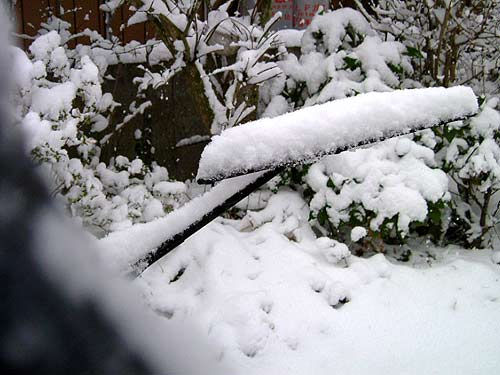
Winter weather is here! Is your car ready? When the temperature drops it can have some seriously negative effects on your vehicle, which is why it is so important to winterize your car. Basic maintenance and simple adjustments make a world of difference when it comes to prepping a car for winter and safe winter driving. To make it easy for you, we’ve listed some of the most important steps to winterize your vehicle in the upcoming months:
- Get your tires checked. Cold weather causes tires to lose their air quicker than usual. Checking the air pressure is crucial during the winter season, especially because roads are so slick and icy, you need your tires to be at top performance more than ever. If it is an option financially, snow tires are a great option as they can reduce travel time while increasing safety of the vehicle.
- Winter wiper blades are a cost effective preventative measure as they usually range from about $8-$10 each. These blades have a thicker and wider rubber covering and are able to power through snow and ice more effectively than normal wiper blades.
- Check windshield washer fluid levels! Switching to a winter grade solvent windshield washer fluid during this time of year is helpful because it doesn’t freeze. It is also especially important in the winter because it is able to assist in clearing away snow and ice on the windshield if you are in a rush and don’t have much time to scrape off ice.
- Keep your gas tank as full as possible during the next few months. This prevents the gas line from freezing. Condensation typically builds up inside a gas tank but during the winter it is especially dangerous because it can freeze. Should this happen, the water will sink to the bottom of the tank, freeze, and consequently make it impossible to drive. If you are not able to pump a full tank’s worth of gas, adding a bottle’s worth of fuel de-icer to the tank can keep the line from freezing.
- Salt is one of the most harmful elements to cars during the winter. It is necessary for keeping the roads safer and less icy, but in turn salt gets into the undercarriage of a car, causing parts to rust and erode over time. Getting your car washed (at least once a week) in the winter washes away the salt which can be detrimental to both the car and your wallet should it cause erosion. Be sure to ask for an undercarriage rinse for best effects.
- Despite the cold temperatures, an engine can still over heat in the winter. The cold causes oil to thicken which makes it move more slowly between different parts of the engine, which results in it getting too hot. A simple oil change, which is recommended about every 3,000 miles, is the best way to keep this from happening.
- On the other hand, you don’t want your engine to freeze either, which is why antifreeze is essential to ensure that your vehicle survives the cold. Putting the right amount is crucial to the engine’s performance as well. Creating a mixture of about 50% antifreeze and 50% water is the ideal fluid to put into the engine.
- Check the battery, belts, and hoses. The engine has to work much harder in the cold which puts extra strain on the battery. They typically last about 3-5 years but it is important to keep track so that you don’t end up stranded in the snow. Belts and hoses are weakened by the cold which makes it easier for them to snap or break. Have a mechanic take a look at these when you bring your car in for an oil change.
- Should you ever find yourself stranded in the snow with a broken down car, one of the most important things to have is an emergency kit specifically for winter. This should include blankets, boots, gloves, flares, a flashlight, ice scraper, spare tire, and energy bars.
- Make sure your Mass auto insurance policy is squared away before hitting the road, just in case. Call your MassDrive agent today to learn more.
This season can result in extremely dangerous winter driving conditions which is why it is so important to be sure that your car is in the best shape possible! These tips not only make driving safer in the present, but help to prevent potentially serious damage to your car in the future!
Photo by wanko
